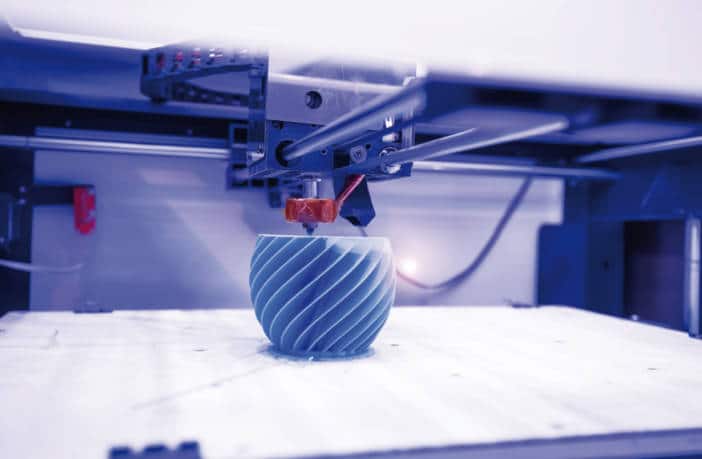How will 3D printing conquer the supply chain?
By 2022, the global market for 3D printing is expected to exceed $ 30 billion. Organs, glasses… what if tomorrow 3D printing become limitless? Beyond the prototyping stage,…
On April 19, 2018

By 2022, the global market for 3D printing is expected to exceed $ 30 billion. Organs, glasses… what if tomorrow 3D printing become limitless? Beyond the prototyping stage,…
On April 19, 2018
By 2022, the global market for 3D printing is expected to exceed $ 30 billion. Organs, glasses… what if tomorrow 3D printing become limitless? Beyond the prototyping stage, additive manufacturing is now semi-industrialised. A trend that is beginning to impact the supply chain.
Adidas 3D Runner sneakers at $ 333, fully customisable, would you buy it? Yet 3D printing pervades our daily lives. Hearing aids, household appliances accessories, advanced production and tooling applications in aeronautics … Additive manufacturing is rapidly becoming a reality. So much so that many industrials consider it a real game-changer. “We are facing a historic change- equivalent of the arrival of microelectronics in its time,” says Khaled Hadj-Hamou, lecturer at the Polytechnic Institute of Grenoble, France. Companies are aware that 3D printing is becoming an essential part of their production system. The real question is not knowing “if”, but “when and how” this technology will impact their markets. If the stage of experimentation and prototype creation is over, it is time to think about the structuring of its inputs in the supply chain. Khaled Hadj-Hamou confirms: “A new era is underway, despite the absence of a structured ecosystem.
Manufacturers and their engineers must rethink their supply of raw materials and components, the management of inventories and the calculation of their needs to manufacture new types of products. 3D printing saves time in spare parts prototyping, but above all, it satisfies a multi-faceted, ultra-connected consumer, Millennials: a generation that demands personalised processing and simplicity. At a time when customisation and even ultra-customisation guide manufacturers, 3D printing is part of the revolution of industrial production modes and the creation of the products of tomorrow.
Today, leading-edge industries recognise the agility of 3D printing to make a high-tech spare part. In the aerospace industry, the Boeing 737s and nearly half of the Airbus A320s will be equipped with the new Leap® engines. Developed by General Electric and Safran, they feature a 3D printed carburettor. As for the new Airbus A350, it has nearly 1,000 3D printed parts! As for the tire industry, Michelin is offering the first 3D printed tire approved for summer / winter: the CrossClimate. It has been designed for the German market thanks to unique tire mold slats, impossible to produce in conventional manufacturing.
All these examples point to a rapid evolution of the spare parts market. In the automotive industry, 3D printing has already helped manufacturers legally required to keep parts of cars they no longer produce for several years. And the some delivery and transport suppliers have included it to their offer- in the United States, the UPS network offers start-ups, SMEs and individuals a 3D printing service on demand: architectural models, accessories for cameras, lamps or cables…
While HP has launched its range of pro 3D printers at rates ranging from $ 100K to $ 1M, Pollen AM, a French start-up, is shaking up the market with an entry-level at € 16K. The manufacturing process is one of a kind: PAM, the first multi-material heterogeneous printer.
The materials can be used raw, without prior transformation in the form of filaments or structured granules. Manufacturers can choose their approved materials as is; a saving of time and considerable money. Another advantage is the absence of post-production, such as sanding, thanks to the use of mineral salts removed with water. As the owner of all patents and source code, Pollen AM opted for a volume market while its competitors remain in a niche market. Sales forecast: € 2 million. An ambition in line with the revolution announced on the market. Conquered, SEB plans to use this technology to offer hundreds of references of spare parts or objects that can be misplaced. What to overcome the risk of built-in obsolescence improving the experience and the satisfaction of its customers. And that’s without mentioning the stock reduction!
Manufacturers, retailers,3PL … the world is on active standby. The logistician pays great attention to customer issues related to custom packaging and new types of packaging. At FM Logistic, additive manufacturing makes industrial robots more versatile. Internally, 3D printing is used to make custom gripper clips, suitable for Universal Robot collaborative robots. These little robots are used to perform meticulous and repetitive actions like grabbing bottles of shampoo and positioning them on a conveyor. The combination of different internal technical know-how makes it possible to design the ten or so “hands” specifically to each bottle. Before 3D printing, it took three or four weeks of manufacturing compared to 10 days today. And the financial gains are on average 40%. Nearly 25 robots are expected to be equipped by 2019.
Fill in the form